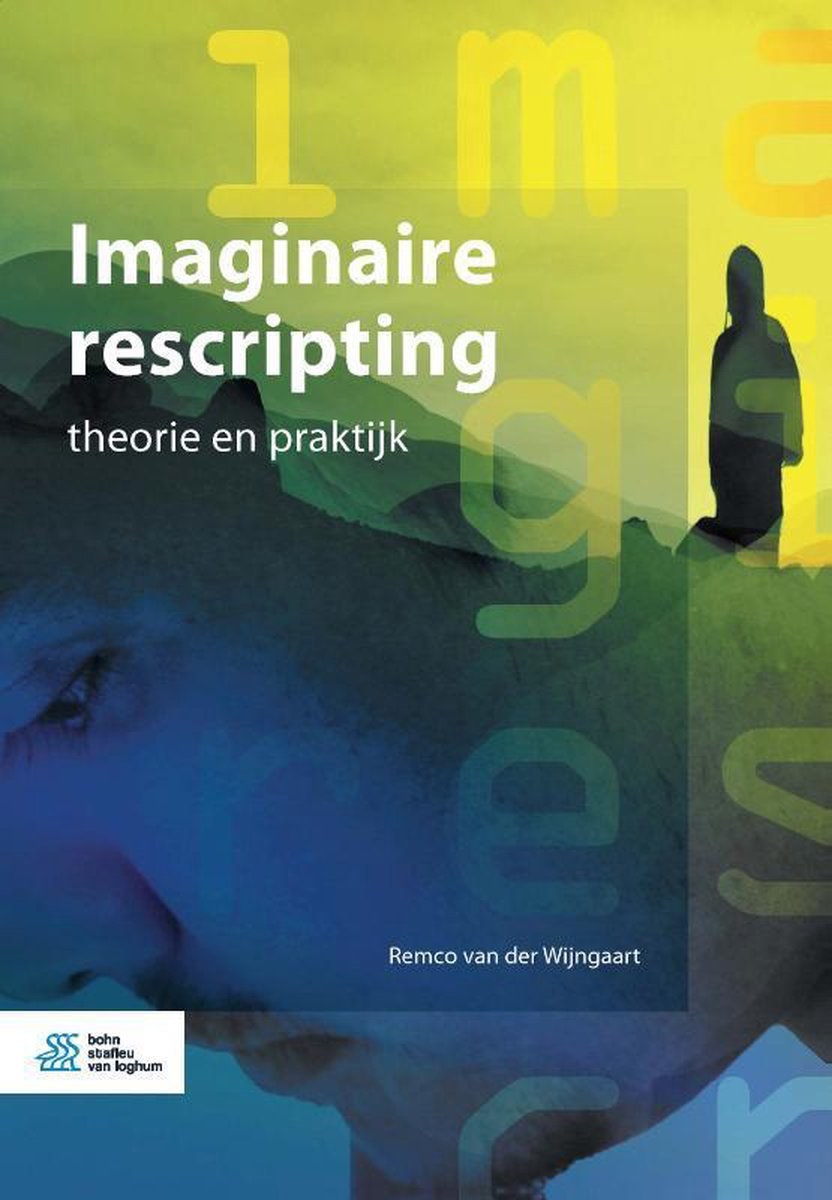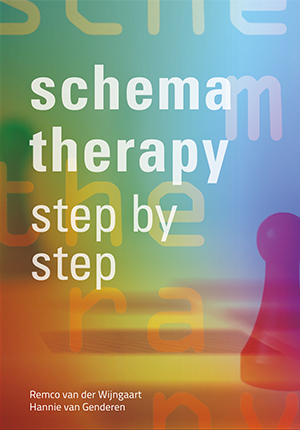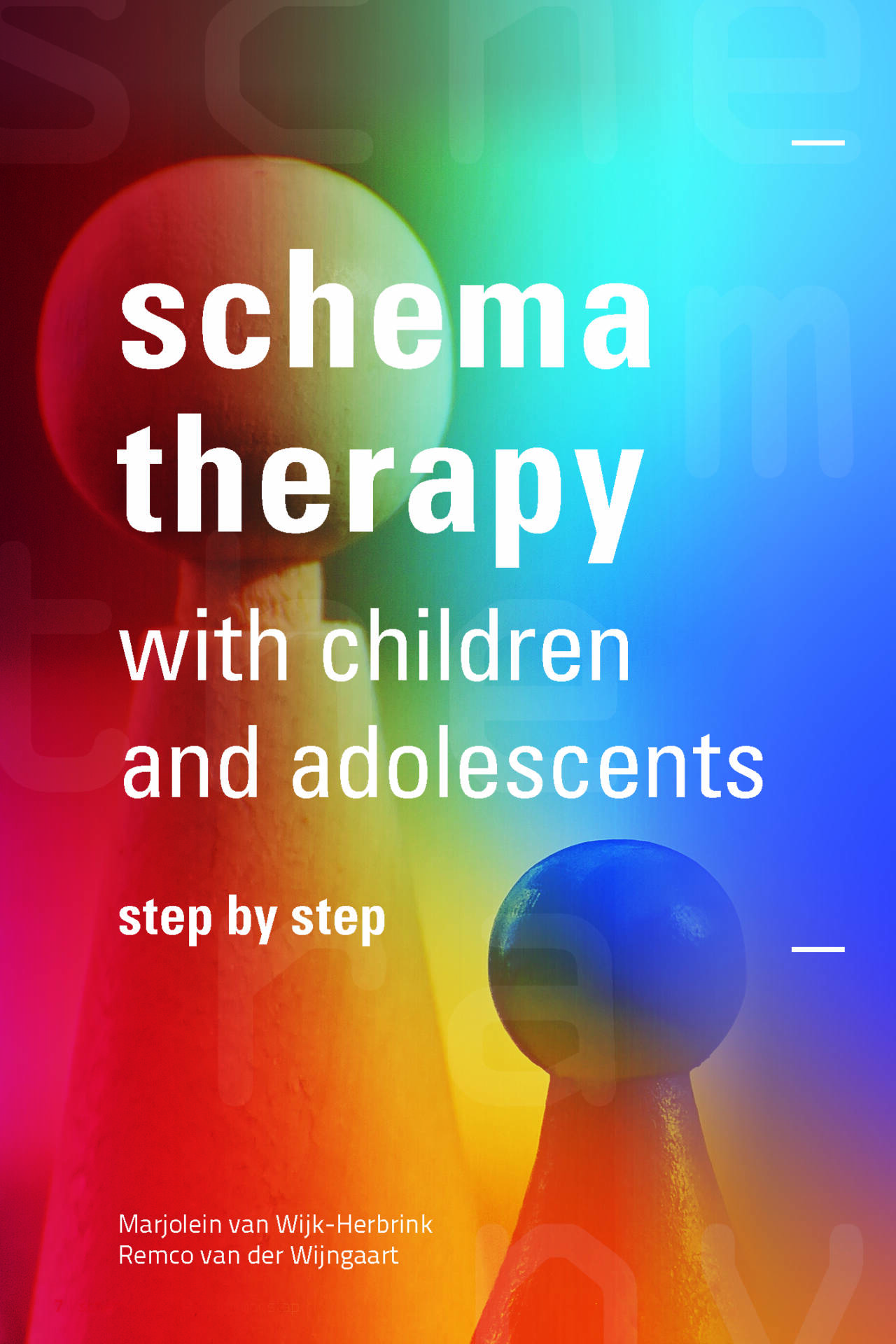Information for therapists
This page is intended for therapists who want to start using Imagery Rescripting (ImRs) or who already use this treatment and want to deepen their knowledge. On this page, clinicians can read and see how ImRs is applied and find information about the possible working mechanisms of ImRs. Readers will also find tips on which books, audiovisual productions, and scientific publications can help a therapist find more specific or in-depth information about ImRs. Answers to frequently asked questions are provided under the heading FAQs. Finally, links to providers of accredited training courses in ImRs are provided. Enjoy learning!
In what situations can ImRs be used?
ImRs is a technique whereby a patient visualizes meaningful and/or traumatic events, and the course of treatment of these events is rewritten. By vividly visualizing these changed events, corrective emotional experiences are generated that can reduce symptoms. ImRs is a proven effective treatment for various psychological symptoms. For example, ImRs is now a guideline-recommended treatment for PTSD, and a specific form of ImRs is a guideline-recommended treatment for nightmares (Imagery Rehearsal Therapy; Krakow & Zadra, 2006, 2010). ImRs is part of the protocol treatment for social anxiety disorder and an important part of schema therapy for personality disorders. Finally, three meta-analyses (Morina et al., 2017; Kip et al., 2023; Kroener et al., 2023) show that ImRs is a promising treatment for various other disorders, such as anxiety disorders and obsessive-compulsive disorders (Strachan et al., 2020).
How does ImRs work?
The core of ImRs is changing visualized meaningful images, thereby creating corrective emotional experiences that contribute to reducing psychological complaints. The technique can be part of a comprehensive treatment, such as schema therapy for personality disorders, or it can be a stand-alone treatment for specific complaints, such as PTSD. Although much is still unknown about the mechanisms of ImRs, there is some evidence that validating unmet basic emotional needs plays a central role in the effectiveness of ImRs (Woelk, Landkroon, Raes, Engelhard, Hagenaars & Krans, ‘Working mechanisms of imagery rescripting: A systematic review and research agenda’ (submitted for publication). Therefore, the guiding question in ImRs is: ‘What does the client need in the image?’. The rescript can be related to one or more basic needs, such as the needs related to safety, connection, self-expression, autonomy, appreciation, justice or realistic boundaries.
In ImRs, focus on the most emotionally charged memories
A critical guideline when conducting ImRs is to go to the most emotionally charged memories, the so-called ‘hotspots’ (Dibbets et al, 2016). When there is sufficient emotional activation, the therapist or client intervenes in the image according to the important emotional need in the image at that moment. The imagery rescript provides an emotionally corrective experience in which the relevant core emotional needs are validated. This corrective experience should then be consolidated through a good debriefing and, for example, by giving homework. An example of this homework is listening to an audio recording of the rescripting.
Supporting materials
Applying ImRs starts with an accredited training course and then practicing, preferably with regular peer supervision. Various tools can help in this learning process: books that describe the technique in detail, audiovisual productions that show examples of how to do the exercises in practice, and articles that offer insight into research into the effectiveness and mechanisms of ImRs. Below are some suggestions of materials that can help.
Books & Audiovisual Productions
Important scientific publications
Theoretical and Clinical Articles
This article provides a nice overview of ImRs, from the rationale to the empirical evidence of the technique and its application in the treatment of personality disorders.
This article describes the various steps of ImRs, in which the client rewrites the visualized image.
This chapter from the book ‘Creative Methods in Schema Therapy’ provides an overview of ImRs as a treatment for symptoms related to childhood trauma.
Reviews and Meta-analyses
This paper is a meta-analysis of ImRs for psychological complaints associated with aversive memories. The studies described in this meta-analysis concern ImRs in adult patients with post-traumatic stress disorder (eight trials), social anxiety disorder (six trials), body dysmorphic disorder (two trials), depression (one trial), bulimia nervosa (one trial) or obsessive-compulsive disorder (one trial). ImRs was administered in an average of 4.5 sessions (range, 1-16). Effect size estimates suggest that ImRs is largely effective in reducing symptoms from before to after treatment and follow-up in the total sample. Furthermore, the effects of ImRs on comorbid depression, aversive images and encapsulated beliefs were also significant. The findings indicate that ImRs is a promising intervention for psychological complaints related to aversive memories, with significant effects obtained in a small number of sessions.
The paper is a meta-analysis based on randomised controlled trials (RCTs) into the efficacy of ImRs for mental disorders associated with aversive memories. Seventeen studies were included with a total of 908 participants (417 in the ImRs condition) who have post-traumatic stress disorder, anxiety disorders, depression or eating disorders. The results suggest that ImRs can be used to effectively treat a variety of psychological disorders with effects comparable to evidence-based interventions. Limitations include the limited number of trials included for each mental disorder.
A systematic literature review identified 23 studies involving 805 adult patients, 15 of which were set up as randomised controlled trials (RCTs) with patients with the following diagnoses: Social anxiety disorder (SAD), post-traumatic stress disorder (PTSD), bulimia nervosa, borderline personality disorder, obsessive-compulsive disorder, nightmares, test anxiety, health anxiety and generalised anxiety disorder. Most of the studies (14) consisted of a single treatment session. ImRs appears to be a promising and short technique for the treatment of clinical symptoms associated with aversive prospective and retrospective mental images.
Imagery Rescripting in practice
During ImRs, the clinician asks the client to create a vivid image (as best as they can) of an event related to the current focus of the therapy or a core belief about self or others. At the moment when the emotions evoked by the memory are most strongly portrayed, the client imagines that someone steps into the image and changes the course of the visualized events. At the start of the therapy, as the therapist completes the rescripting. However, as the treatment progresses, the client is encouraged to rewrite the image independently. The therapist (or client) who steps into the image does what is necessary to validate the client’s emotional needs in the visualized event. The therapist provides safety, connection, and space for self-expression or autonomy or corrects injustices. In the final phase of the therapy, a future-oriented image can be used to prepare the client for handling future trigger situations. Examples of all these applications are provided below.
Examples of ImRs in the different phases of the treatment
Diagnostic imagery
In this exercise, early memories related to the current complaints are identified. (Katy Keady, actress, play the role of Nicky, a patient with a Borderline Personality Disorder. ImRs is part of the schema therapy for her personality disorder)
The therapist rescripts
In the initial phase of the treatment, the therapist steps into the picture. (Katy Keady, actress, play the role of Nicky, a patient with a Borderline Personality Disorder. ImRs is part of the schema therapy for her personality disorder)
The client rescripts
In the middle and final phase of the treatment, the client rescripts memories related to the complaints.
For a detailed explanation of these exercises, consult the books and publications for clinical practice.
FAQ Frequently Asked Questions
No. Although Imagery Rescripting is often used within schema therapy, it has also been researched as a stand-alone therapy. Initially, the approach was used to treat PTSD symptoms. However, it has since been shown to be effective in reducing various undesirable cognitions (including intrusive thoughts, beliefs, mental images, memories, nightmares and hearing voices) in various disorders. ImRs is a technique that is also often used in cognitive behavioural therapy. In schema therapy, ImRs is often used to address memories related to the development of schemas or modes that are being treated during the treatment, and to reduce associated post-traumatic stress symptoms.
In a recent randomized control study (IREM) that compared EMDR and ImRs in the treatment of complex PTSD (sexual abuse), it appeared that EMDR led to faster symptom changes. By the end of the treatment, the outcomes of both therapies were comparable, but in follow-up, ImRs showed better results than EMDR, with the symptoms continuing to improve for the ImRs group after treatment (Boterhoven de Haan KL, Lee CW, Fassbinder E, et al. 2020)). However, therapists often integrate elements of ImRs into their EMDR practice and use EMDR in combination with ImRs within schema therapy (see the podcast What’s The Schemata, episode ‘EMDR and Schema Therapy; a Power Couple? Schema, Trauma and PTSD with Dr Sarah Dominguez).
In imaginal exposure, the client relives a negative memory during therapy (usually with eyes closed, in the present tense and in the first person) with the aim of getting used to experiencing the emotions. ImRs contains an element of imaginal exposure, as the client relives the original memory in the first part of the rescripting. However, in ImRs, the memory is paused at the moment the client feels the original negative emotions (i.e. at or just before the ‘hot spot’ of the traumatic memory), and the ending is adjusted to help the client have their needs met.
ImRs can be safely applied to clients who are prone to dissociation, although there are several recommended ways to reduce or manage dissociation. Strategies to prevent dissociation include; a thorough analysis of dissociation; discussing ways to avoid/manage dissociation with the client before commencing ImRs; reducing uncertainty/anxiety by discussing the rescripting steps in advance; reducing anxiety before the rescripting (for example, by breathing more slowly); move more quickly through the original memory part of the re-enactment to lower the intensity of emotions; the therapist takes a more leading role in the re-enactment; use grounding techniques (such as sensory objects) during the re-enactment; client and therapist can each hold one end of a scarf, so the therapist can pull on it if the client does not respond. To manage dissociation when it occurs, the therapist can use grounding and calming techniques while continuing with the rescripting and reassuring the client (for example: ‘You are safe with me here in the therapy room, this image cannot harm you and there is no reason to dissociate. Come back to the image…”). See Paulik, G., Newman-Taylor, K., Steel, C., Arntz, A. (2020).
In the early years of Covid-19, therapists often had to offer therapy online. As a result, it allowed researchers to discover whether ImRs could be applied safely and effectively online. Although no RCTs were conducted, feedback from clients and therapists widely indicated that ImRs were equally effective and safe, but only if the client had sufficient privacy to conduct the online session and other issues, such as internet connection and post-therapy routines, could be resolved (see Paulik, G., Maloney, G., Arntz, A., Bachrach, N., Koppeschaar, A., & McEvoy, P. (2021)
There is no set number of ImRs sessions. The duration of the therapy depends on the mental health condition and the problem to be treated (with more sessions for more complex cases). It also depends on whether ImRs is given as a stand-alone intervention or integrated into schema therapy or CBT, with fewer sessions usually being devoted to ImRs when it is incorporated into a broader therapy approach. Studies have shown that even just one session of ImRs can be useful. For a meta-analysis, see Morina, N., Lancee, J., & Arntz, A. (2017).
There are various factors that must be taken into account when determining how much the therapist should intervene in the image versus the client, such as how early/late it is in ImRs therapy (often the therapist intervenes more in earlier sessions with rescripting, while the client does more on their own later), how well developed the client’s healthy adult mode is (clients with very complex childhood traumas and little experience with therapy often have a less developed healthy adult mode and therefore do not know what their unfulfilled needs as a child were or how these can be fulfilled); and whether the client is prone to dissociation (in clients prone to dissociation, it is often recommended that the therapist intervene more, especially in the initial stages of therapy). Where possible, it is important to strive for the client to lead the rescript themselves, as qualitative studies on ImRs have shown that clients experience phases 2 and 3 – in which they mainly lead the rescript themselves – as particularly empowering.
There is some debate about whether violence against an offender is acceptable within ImRs, which seems to depend largely on the preference of the client and the therapist. An important guideline in using violence is ‘What is the relevant emotional basic management need of the client?’. Suppose a client has experienced a lack of self-expression in the past. In that case, the use of violence can be a form of self-expression that offers the corrective emotional experience that is appropriate for this client. However, if a client has had a deficit in learning to tolerate realistic boundaries and safe connections with others in the past, then the use of violence may not be the necessary corrective experience, but rather, a more limited, safe way of expressing feelings would be appropriate. One study compared the absence versus the inclusion of violent/vindictive behaviour within ImRs (in a healthy sample) and found that although there was no additional value to the outcomes, it did not cause an increase in ‘aggressive emotions among the participants’ (Seebauer, L., Froß, S., Dubaschny, L., Schönberger, M., & Jacob, G. A. (2014)
ImRs is often carried out slightly (and sometimes very) differently for different client populations and with various problems. ImRs has been studied as a stand-alone therapy for some disorders, while for others it is studied as a technique that is added to a broader therapeutic approach (for example, CBT). For a discussion of the various applications, see Arntz, A. (2012). See Strachan, L.P., Hyett, M.P. & McEvoy, P.M. (2020) for a more recent review on anxiety disorders.
ImRs appears to be most effective when used at the most emotional moment of the memory (Dibbets et al., 2016). A practical guideline during the exercise is “You need to feel it to heal it”. It is typical for clinicians to be fearful of upsetting the cleint emotionally or worrying about re-retraumatizing the client. However, it is important to remember that the rescript happens before an abusive interaction. Once this image is accessed, the clinician meets the need and provides corrective emotional experiences for the client. The therapist is active and can use their influence in the image to give care and protection. At the same time, the client must remain able to process the experience and not become dissociated. So, during the exercise, check whether the client can still hear and respond to the interventions offered.
Most people are able to visualize. A small percentage (2-3%) are genuinely unable to summon up mental images. If your client indicates that they do not see any images, a form of (subconscious) avoidance may be at play. In such situations, start with a less emotionally charged memory so the client can have a successful experience with ImRs before moving on to the more emotional memories. It can also be useful to pay extra attention to explaining how the technique works, offer reassurance, and emphasize that the client is in control of the exercise and can stop at any time.
Clinicians can help or support the antagonist in the image to reassure the client (for example, offering help to the caregiver). Guilt often means that the client’s attention is focused on the other person’s feelings, so ask the client to pay particular attention to how it feels when someone stands up for their needs.
Training institutes
There are various institutions that offer training in the field of imagery rescripting. Below is a selection of some of these institutions that we know of that offer accredited ImRs training:
other training institutes will be added over the next couple of days after it has been checked whether they offer English training courses






